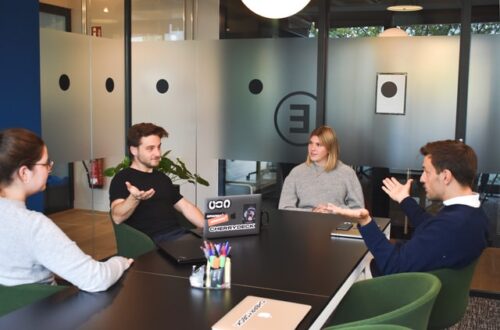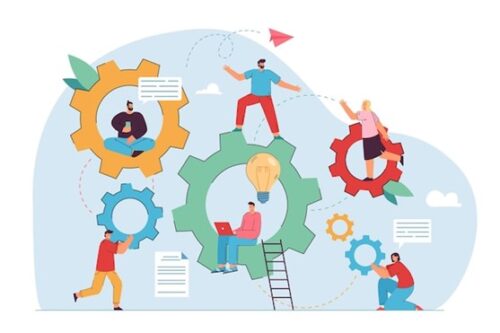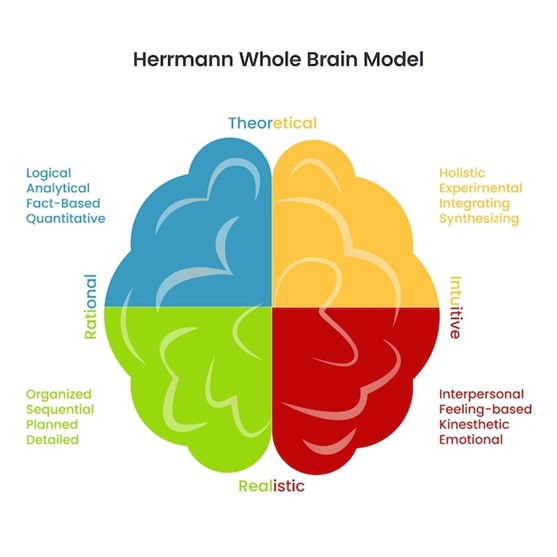Adolescence is a unique and often confusing phase of life. Teenagers are caught in a whirlwind of emotions, hormones, and social pressures, making effective communication a challenge for both parents and educators. To truly understand the teenage mind, it is crucial to delve into the depths of their cognitive processes. Only by doing so can we bridge the gap between generations and establish meaningful connections. Understanding the teenage mind is no easy task. Application of Herrmann Brain Dominance Instrument (HBDI), parents, educators, and professionals can bridge the communication gap and unlock the potential within each teenager.
Introduction to the Herrmann Brain Dominance Instrument (HBDI)
In the quest to understand the complexities of the teenage mind, one valuable tool stands out: the Herrmann Brain Dominance Instrument (HBDI). Developed by Ned Herrmann, this assessment provides insights into an individual’s thinking preferences based on the Whole Brain Model. By identifying their dominant thinking style, we can gain a deeper understanding of how teenagers process information and make decisions.
The Whole Brain Model and its application in understanding the teenage mind
The Whole Brain Model, upon which the HBDI is based, recognizes four distinct thinking styles: analytical, practical, creative, and relational. Teenagers often exhibit a combination of these styles, with varying degrees of dominance. Understanding these preferences can help parents and educators tailor their communication strategies to effectively engage with teenagers. For example, if a teenager has a dominant analytical thinking style, presenting information in a logical and structured manner might resonate with them better than emotional appeals.
The Application of HBDI profile and its relevance in teenage communication
The HBDI assessment generates a unique profile for each individual, highlighting their thinking preferences across the four quadrants of the Whole Brain Model. This profile serves as a roadmap for effective communication with teenagers. By understanding their dominant thinking style, parents and educators can adapt their approach to match the teenager’s preferences. This leads to more meaningful conversations, increased understanding, and enhanced engagement.
How Application of HBDI communication can enhance understanding and engagement with teenagers
Applying HBDI communication techniques can revolutionize the way parents and educators interact with teenagers in Sydney, Melbourne, Brisbane, Perth, Adelaide and across Australia. By aligning their communication style with the teenager’s thinking preferences, they can create an environment that fosters open dialogue and mutual understanding. For instance, if a teenager has a dominant creative thinking style, incorporating visual aids, storytelling, and imaginative activities into the conversation can capture their attention and spark their interest. This approach not only enhances understanding but also promotes active participation and engagement.
Practical tips for application of HBDI communication techniques with teenagers
Implementing HBDI communication techniques requires a thoughtful approach. Here are some practical tips for effectively applying these strategies when communicating with teenagers:
- Know their HBDI profile: Begin by understanding the teenager’s HBDI profile. This will provide valuable insights into their thinking preferences and guide your communication approach.
- Adapt your language: Tailor your language and vocabulary to match the teenager’s dominant thinking style. For example, if they have a practical thinking style, use concrete examples and real-life scenarios to convey your message.
- Use a variety of communication channels: Teens have adapted to a digital world, so utilize various communication channels such as text messaging, social media, and video calls to connect with them on their terms.
Real-life examples of turning ‘eye rolls’ into ‘aha moments’ using HBDI communication
The power of HBDI communication becomes evident when we witness the transformation of ‘eye rolls’ into ‘aha moments’. Here are a few real-life examples of how HBDI communication techniques have bridged the communication gap between adults and teenagers:
- The Science-Enthusiast: A teenager with a dominant analytical thinking style was having difficulty understanding complex scientific concepts. By presenting the information in a logical and systematic manner, using visual aids and real-world examples, the teenager’s eyes lit up with understanding and excitement.
- The Artistic Dreamer: A teenager with a dominant creative thinking style was struggling to find their voice in a poetry workshop. By incorporating artistic techniques and encouraging free expression, the teenager’s ‘eye rolls’ turned into a newfound passion for self-expression.
The benefits of using HBDI communication in various settings – education, parenting, counseling, etc.
The application of HBDI communication extends beyond the realms of education and parenting. Professionals in counseling, therapy, and coaching can also benefit from utilizing HBDI communication techniques. By understanding the thinking preferences of teenagers, these professionals can create a safe and supportive environment that encourages self-reflection, growth, and effective problem-solving.
Training and resources for learning and implementing HBDI communication
To fully harness the power of HBDI communication, individuals can seek specialized training and access available resources. Several organizations offer workshops, courses, and materials that equip parents, educators, and professionals with the knowledge and skills to effectively apply HBDI communication techniques. By investing in this training, adults can unlock the potential of the teenage mind and establish meaningful connections.
Conclusion: Unlocking the potential of the teenage mind through HBDI communication
Understanding the teenage mind is no easy task, but with the help of the Herrmann Brain Dominance Instrument (HBDI), parents, educators, and professionals can bridge the communication gap and unlock the potential within each teenager. By recognizing and adapting to their thinking preferences, adults can turn ‘eye rolls’ into ‘aha moments’ and foster a deeper understanding and engagement with teenagers. HBDI communication is a powerful tool that holds the key to unlocking the untapped potential of the teenage mind.
Ready to unlock the potential of the teenage mind? Explore HBDI communication techniques and discover the transformative impact it can have on your relationships with teenagers. Invest in training and resources that will equip you with the tools to effectively apply HBDI communication techniques in Sydney, Melbourne, Brisbane, Perth, Adelaide and across Australia. Take the first step towards turning ‘eye rolls’ into ‘aha moments’ and create meaningful connections with the teenagers in your life.












